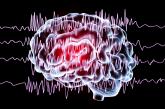Article

An FP’s guide to caring for patients with seizure and epilepsy
- Author:
- Francis G. Tirol, MD
- Matthew R. Levine, MD
- Tian Wang, MD
- Yong Won Cho, MD, PhD
- Gholam K. Motamedi, MD
Optimizing your care requires that you distinguish between provoked and unprovoked seizures and focus on key elements of the patient’s history.
Article

Daily episodes of confusion • altered behavior • chronic sleep deprivation • Dx?
- Author:
- Gholam K. Motamedi, MD
- Margot G. Wheeler, MD
